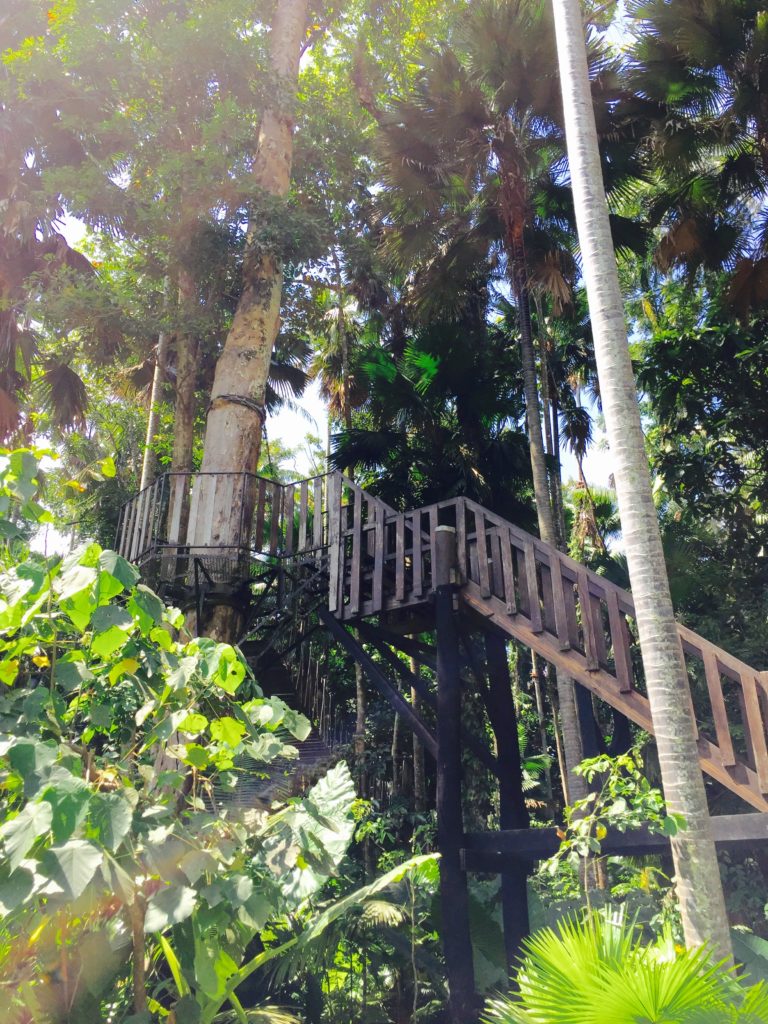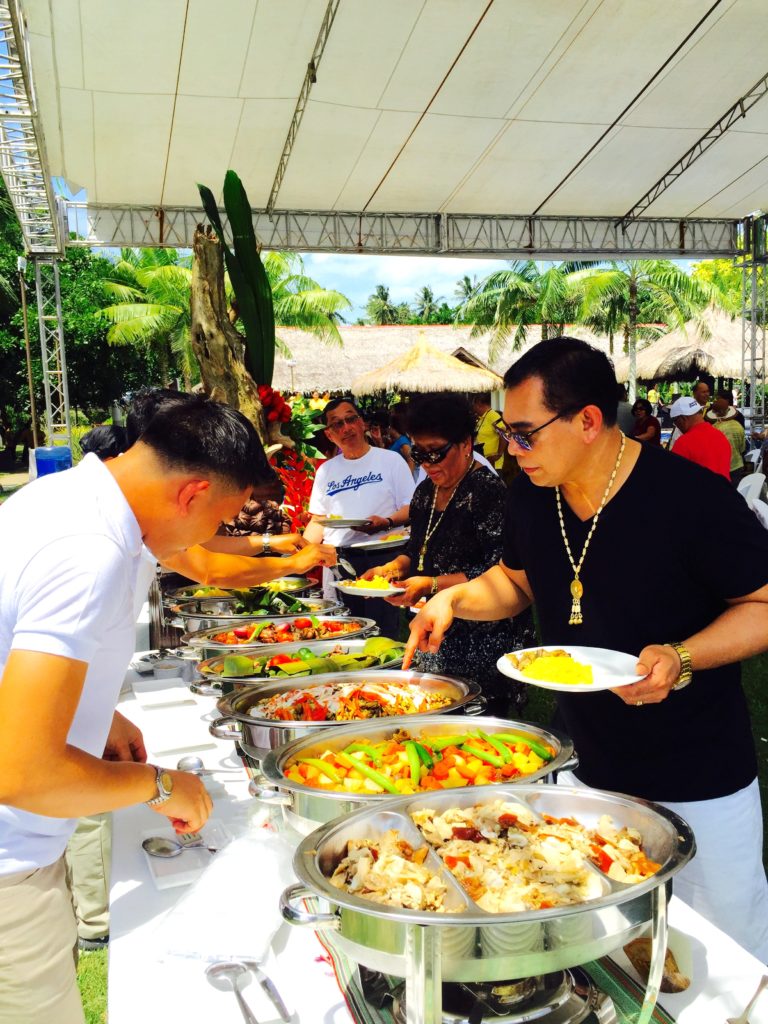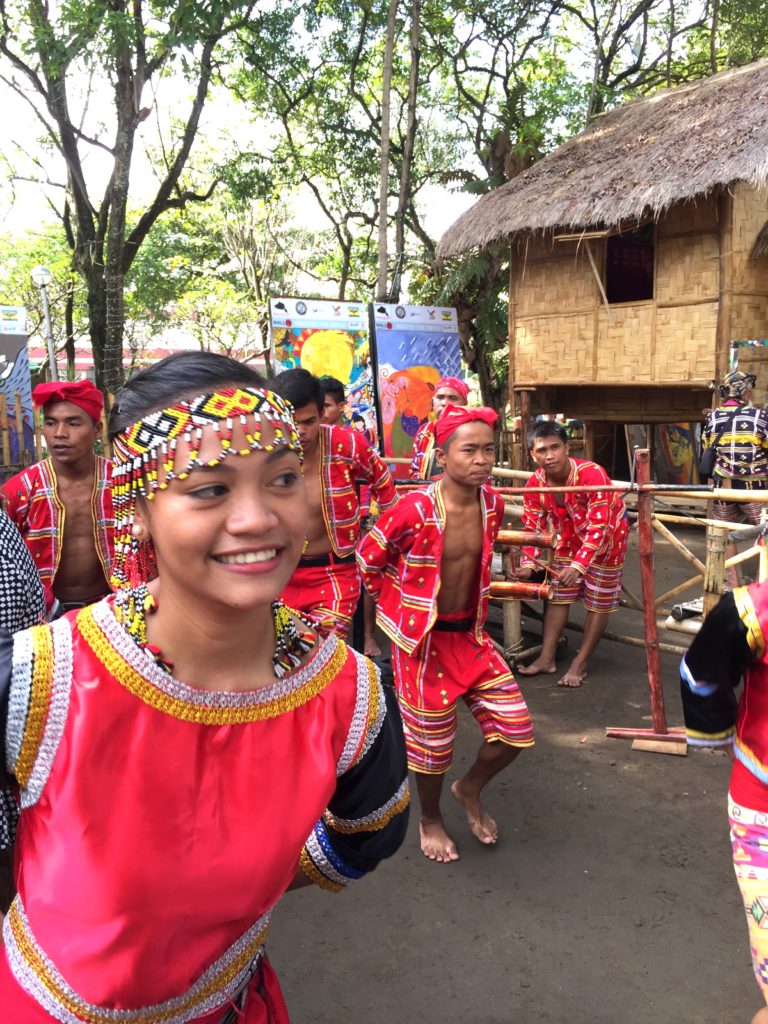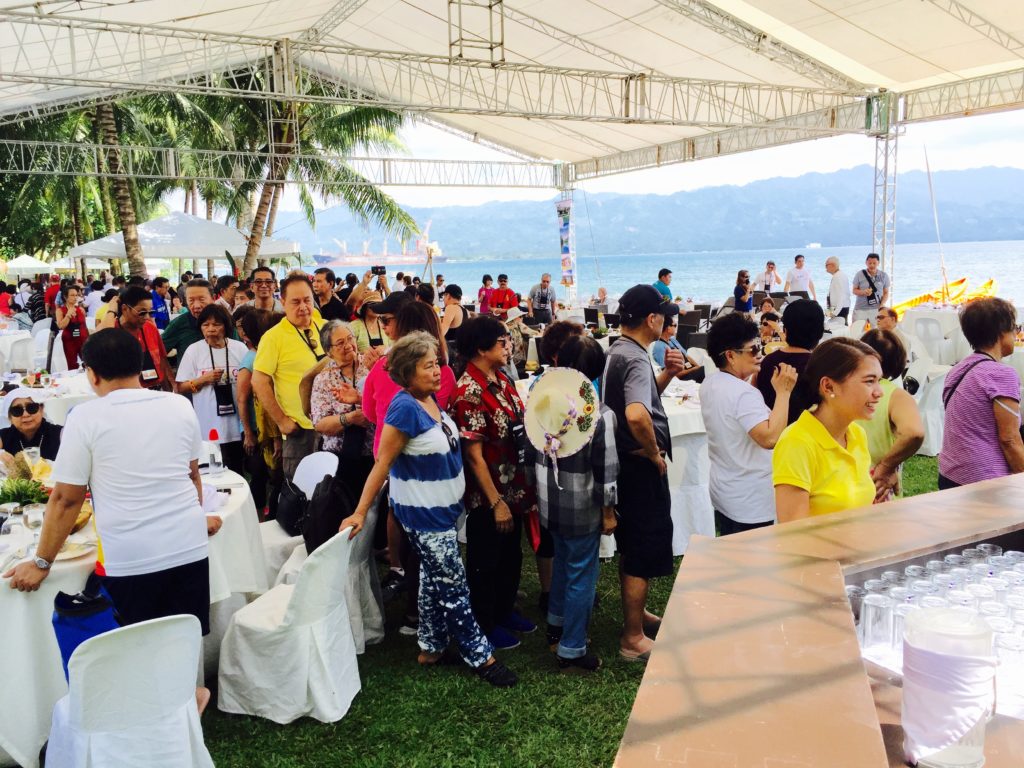Winter Escapaders in a garden city of delights
DAVAO CITY, Davao del Sur — The last port of call for Winter Escapade 5 was Francisco Bangoy International Airport (Davao International Airport),with escapaders anticipating the exquisite sights, sounds, and flavors of Davao.
Lumad (members of Mindanao’s indigenous tribes) clad in their brightly colored native attire, danced and swayed to rhythmic gong sounds and tinkling cymbals from a gamelan orchestra in the airport’s open foyer. Tour participants ohh’d and ahh’d, taking turns posing for photos with the dancers before being whisked by the tour buses for an all-you-can-eat buffet lunch at Viking’s Buffet.
Lunch over, the participants visited the Kadayawan Tribal Village, where the various tribes are represented in an enclave where some members live and offer tourists a glimpse into their way of life. WE5 participants were able to interact with members of the tribe and buy handicraft and souvenirs.

Elevated nature walk, made up of 9 spans, anchored on dao trees, 15 ft high up. Walk is 205 m long and takes 30 min to traverse. INQUIRER/Marisa Roque
Afterward, the participants were bused to either the Marco Polo Davao or Seda Hotel to check in and freshen up for the welcome dinner at the Waterfront Insular Hotel Davao (former Davao Insular Hotel) hosted by the city government.
At the reception, tour participants were treated to a cultural presentation performed by Ateneo Sidlak Performing Arts Collective (ASPAC), the premier performing arts guild of Ateneo de Davao University. ASPAC regaled the participants with authentic songs and dances from Davao’s 11 ethnolinguistic groups.
The tribes include the Ata (Ataas or Agtas, sometimes called the people of the mountains); the Iranun. the Kalagan (or K’gan), Klata-Giangan. Maguindanaon, Maranao, Matigsalog, Ovu-Manuvo, Sama, Tagabawa (or Bagobo), and Tausug (people of the “current” famed for their bravery).
Winter Escapade 5 participants savored the famous cuisine of Davao, which featured fresh seafood, especially tuna kinilaw, and fresh fruit such as durian, mangosteen, mangos, and rambutan.
Davao’s four iconic symbols– durian, the “king of fruits,” the waling-waling (vanda sanderiana) dubbed “queen of Philippine orchids,” the Philippine eagle (pithecophaga jefferyi) also known as the great Philippine eagle and monkey-eating eagle, and Mount Apo, the Philippines’ highest point at 3,144 meters above sea level, are points of pride for the people of Davao.
Day 2 in Davao was spent on a visit Hijo Resorts. This 760-hectare plantation is one of the oldest banana and coconut plantations in the country. It is now a resort that focuses on being one of the country’s very first eco-agri tourism destinations. Rosanna Tuason, current CEO, has set up conservation measures that protect the wildlife in the plantation, and marine life in the sea that borders the plantation’s sprawling Banana Beach. She has hired Harry Morris, a marine biologist who also happens to be a rugby player, to be the director of environmental sustainability at Hijo Resorts. Morris has set up an innovative, protective barrier (artificial barrier reef) ringing the coast of Banana Beach that would allow coral and other marine life to latch on, grow, and flourish.

Dr. Rod Montano (right) WE5 participant from Edmonton, at the Hijo lunch buffet. INQUIRER/Marisa Roque
Hijo Resort has hanging bridges and nature trails that allow the environmentally aware tourist the chance to enjoy nature and still preserve it, leaving the smallest footprint possible when exploring the area.
There are adventures galore for intrepid ecotourists; they can swim and snorkel in the tropical waters, climb the hanging bridges and walk the forest trails. Visitors’ accommodations feature casitas that are air-conditioned and some that are al fresco. The food served at the resort is fresh and organic, harvested from the resort’s own gardens and waters.
Interested travelers may visit www.hijosresortdavao.com for rates and room availability.



